The simple combination of barley, water, hops, and yeast produces many different styles of beer. The process has several steps, and although it is simple enough that it can be done at home with the right equipment, many people would consider brewing an art.
Beer types range from a pale, sparkling yellow to dark, rich reddish-brown. There is a place and time for each, from tossing back a cheap cold lager on a summer afternoon to sipping a sweet, syrupy Christmas brew on a cold winter night. Beer generates a sense of well-being and enhances conversation.

World's Most Expensive Beer
1. Vielle Bon Secours – $ 1,000

2. Carlsberg Jacobsen Vintage No. 2 – $ 600

3. Tutankhamen Brew – $ 525

4. Carlsberg Vintage No. 1 – $ 400

5. Samuel Adams Utopias – $ 100

How To Make Beer
Some of the equipment and supplies include:
- brewpot: A large pot that can hold about eight quarts of liquid.
- blow-off tube/siphon hose: A plastic tube about five feet long that fits snugly in the top of the fermenter. You'll be using this hose to transfer the beer from one container to another.
- fermenter: A big container that lets your beer ferment. Aim for a minimum of seven gallons.
- airlock and stopper: A little gadget that releases carbon dioxide from the fermenter without letting air in.
- bottles: What, you want to drink your beer out of bowls?
- bottle caps and capper: A quality capper can save time and beer.
- bottle filler: This way, you can fill bottles with ease.
- racking cane: A cane-shaped length of plastic tubing used to siphon your beer from one container to another.
And of course the ingredients. If you're a beginner, it's easiest to buy a beer kit. A beer kit provides you with all the necessary ingredients and easy-to-follow instructions.
If you prefer to work with your own recipe, you'll need:
- a packet of yeast powder
- corn sugar
- hops
- a big can of malt extract
- water. ner to another.
- Bring about 2 gallons of water to a boil.
- Add malt and four pounds of sugar. Allow the wort to boil for at least an hour, stirring regularly. Add your hops some time during the hour, depending on how you want your beer to taste.
- While boiling the wort, stir the yeast powder into a cup of warm water and then cover it. Also fill your fermenter until it's about half full of water.
- Once you're through boiling the wort, pour it into the fermenter. Cap the fermenter and wait until it's cooled to about room temperature. Then add the yeast solution. If you add it when the wort is too hot, the yeast will die.
- The initial fermentation will be rapid, resulting in "blow-off" foaming out of the fermenter. To prevent it from getting all over the floor, affix your plastic hose to the top of the fermenter. The free end of the tube should be placed in a bowl of water. The foam will be emptying into the bowl.
- Once the fermentation slows, remove the tube and attach the airlock and stopper. Place the fermenter in a dark place and leave it alone for six to fourteen days until the mixture stops bubbling. This is the primary fermentation.
- Once the mixture stops bubbling, the day of bottling has arrived. Boil three cups of water and add one cup of sugar. This will be your priming solution. After about twenty minutes, allow the solution to cool. Remove the airlock, open up the stopper, and pour the solution into the mixture. Mix it with a racking cane. Then remove the cane and wash it. Close the stopper.
- Attach the racking cane to one end of the plastic hose (now called the siphoning hose). Place the bottle filler on the other end. Open up the stopper. Place the racking cane through the hole until it's about two inches from the bottom of the fermenter.
- The lid of the fermenter should have a stem into which you can blow to increase the air pressure. Now, get a clean bottle. Fill it to within an inch of the top. Cap the bottle. Five gallons of wort should fill about 50 bottles. Keep filling until the wort is about three to four inches from the bottom of the fermenter. Avoid drinking that (the dregs) as it may give you digestive problems.
- Let the bottles of beer sit in a dark place for about a week so that it can age and carbonate. This is the secondary fermentation. After that, you're ready to sample your own beer.
Each type of wine uses a different grape variety to give it a distinct taste and color. Each grape variety offers a unique color, size, skin thickness and acidity. These characteristics are often influenced by the area in which the grapes are grown. An experienced wine maker knows how to blend and choose from the many grape varieties to produce a high quality wine.
World's Most Expensive Wines
1. Screaming Eagle Cabernet 1992
Price: USD500,000 per 750ml
Wine Year: 1992

2. Shipwrecked 1907 Heidsieck
Price: USD275,000 per 750ml
Wine Year: 1907

3. Chateau Margaux 1787
Price: USD225,000
Wine Year: 1787

4. Chateau Lafite 1787
Price: USD156,450 per 750ml
Wine Year: 1787

5. Chateau d’Yquem 1787
Price: USD100,000 per 750ml
Wine Year: 1787

6. Massandra 1775
Price: USD43,500 per 750ml
Wine Year: 1775

7. Penfolds Grange Hermitage 1951
Price: USD38,420 per 750ml
Wine Year: 1951

8. Cheval Blanc 1947
Price: USD33,781 per 750 ml
Wine Year: 1947

9. Romanée-Conti DRC 1990
Price: USD28,113 per 750ml
Wine Year: 1990

10. Chateau Mouton Rothschild 1945
Price: USD23,000 per 750ml
Wine Year: 1945

How To Make Wine
Winemaking begins after the grapes are harvested. The process for making red wines differs slightly from that used to make whites. With a red wine, the grapes are crushed and fermented with the skins and seeds. In a white wine, the white grapes are pressed and the juice is fermented. During fermentation, the sugars are converted to alcohol with yeast. A second fermentation allows the wine to become clear.
After the fermentation stages, some wines are aged in oak barrels to add additional notes of flavor in the aftertaste. Others are directly bottled.
Before beginning to make homemade wine, there are a few supplies needed to get you started:
- 23-liter glass or plastic carboy
- 30-liter plastic container with a non-airtight lid
- 5 feet long plastic tube
- airlock and bung for the carboy
- dairy thermometer
- hydrometer
- long pipette
- long spoon
- long tube or jar.
A carboy is a plastic container with a fermentation lock and rubber stopper that is used to ferment the wine.
A winemaker needs a few ingredients to begin:
- ascorbic acid or potassium sorbate to stop fermentation
- bottles and corks
- detergent
- filtered water
- grape or fruit juice
- sodium metabisulfite to sanitize
- yeast.
Of course, many professional winemakers use other ingredients as well, such as oak barrels for the aging process.
Many companies sell winemaking kits that come complete with everything needed to make your first bottle of wine, as well as a detailed instruction manual.
These kits are fairly inexpensive and are a great way to experiment with the winemaking process.
Many amateur winemakers come across a few problems along the way to their first bottle of vino. Fermentation is a tricky stage; check in on the wine to ensure it has not gone into stuck fermentation. Make sure the temperature is around 75 degrees Fahrenheit during this stage to allow the yeast to ferment at a pace that is best for wine. Always sanitize all the equipment used. There is a special solution specifically for winemakers.
It is important to take note of the wine’s exposure to air, as this could lead to oxidation, thus tainting thewine.
3. WHISKEY
3. WHISKEY
From its earliest days, whiskey has been known for its curative and creative properties. It evolved into a unique cultural icon of the people who savored it. It has charmed saints and tormented sinners. Each country, distiller and blender has made a distinct interpretation of this drink. Today, whiskey is enjoying yet another revival as a cultural icon.
World's Most Expensive Whiskeys
1. The Macallan Fine and Rare 1926 $ 75,000

2. Dalmore 62 Single Highland Malt Scotch $ 58,000

3. Glenfiddich Rare Collection 1937 $ 20,000

4. The Macallan Lalique Crystal Decanter $ 12,500

5. Dalmore Decanter $ 11,000

6. Glenfarclas 1955 $ 10,878

7. The Macallan 1939 $ 10,125

8. Chivas Regal Royal Salute $ 10,000

9. The Macallan Fine and Rare 1947 $ 6,800

10. Ladybank Single Malt $ 4,700

How To Make Whiskeys
All it takes: grain, water and yeast!
Quantities
Approximately 100 kg (222 lbs) grain will make 600 liter mash. The expected end result is 32-35 liter pure (theoretically 100%) alcohol, from which we can make about 80-87 liter (21-23 gallon) whiskey that has the strength of 80 proof.
Grinding
This stage is simple: grind the grain into a course meal (you want a consistency similar to what is required for beer).
Mashing
Next, you will mash in your ground malt barley, mixed with water, in the mash tun that can be identical to a brewer's mash tun.. This process also known as "sugaring" or "conversion", when we convert the starch into sugar resulting in a liquid "wort". How much time this process takes is well known for brewers: depends on the size of the tank and amount of mash.
Separating the Wort
To separate the wort, the mash is sieved through a false bottom screen plate at the bottom of the tank. The liquid is then drained to a fermentation tank and the remaining wet grains can be disposed of or used as animal feed.
Fermenting
Unless you cultivate your own yeast, you should use new yeast for every new batch of liquid wort you ferment. Fermentation, usually taking 2 to 3 days, begins once the yeast is added and should take place at about 95 degrees Fahrenheit.
Distilling
The number of rounds to distill, once again, depends on the taste the distiller desires. Keep in mind that every run through the still increases the purity of the whiskey. If using a regular pot still, or alembic, note that only a little more than half of the water content is actually removed, an inefficient process but still allowing for some variation. Traditionally, the Scotch whisky is distilled twice and the Irish whiskey three times. For this reason, the Irish claim their whiskey is a smoother and purer whiskey.
Don't forget about the unwanted runoffs while distilling: the "heads", an undesirable and poisonous liquid, boils off first before the ethanol begins to burn; discard of the "tails", as well, as they fall below 80 proof and do not add to the quality of the whiskey. The ideal distillate sought for in whiskey falls around 80 proof.
Maturation
Finally, the whiskey matures in oak casks. The legal minimum when aging whiskey is 3 years. During this maturation process the whiskey "breathes" in the barrel, gaining aroma, flavor and color. Aging, sometimes referred to as mellowing, takes the edge off the raw whiskey and creates what we know as the smooth whiskey. Also, during the aging process, a percentage of the alcohol evaporates. This evaporated alcohol is called the "angels' share".
4. VODKA
Vodka is a clear and (ideally) odorless, flavorless alcohol that is popularly consumed in the U.S. and across the world. It lends itself well to mixing, making it a versatile spirit capable of carrying a variety of flavors or fortifying any number of drinks. Vodka has a long history closely tied to the frigid region of its origin.
World's Most Expensive Vodka
Diva Vodka
Diva Black Gold is produced by a Scottish company "Blackwood Distillers". "Diva" passes triple distillation: at first through ice, then through coal and in the end through a sand mixture of diamonds and jewelery. A bottle of Diva Black Gold costs from $70 to $1,060,000 and it depends on the size of a diamond attached to the bottle.

Diva Vodka is a wheat-based vodka that is triple distilled and filtered through Nordic birch charcoal and then filtered through precious gems like diamonds, emerald and rubies. The bottle contains a glass tube filled with crystals that can be used as a garnish. The 48 crystals in each bottle include cubic zircona, smoky topaz, pink tourmaline, amethyst, citrine and peridot. What is more interesting is that the crystals in each bottle are hand-prepared and each person has a favorite color and puts this at the bottom of the column so that the bottle can be traced back to the individual

Top 10 Vodkas
1. Imperia Vodka

2. SKYY 90
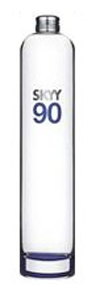
3. Jean-Marc XO
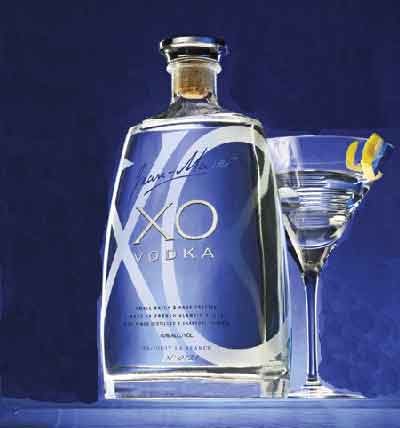
4. Ultimat

5. Xellent

6. 42 Below

7. Hangar 1

8. Roth California

9. Stolichnaya Elit
10. Kauffman Luxury Vintage
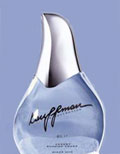
How To Make Vodka
Distillers produce vodka by fermenting mash made from grains such as:
- beets
- molasses
- potatoes
- rye
- vegetable matter
- wheat.
The sugars created by the fermented mash are then distilled. While all vodka is produced clear and colorless, vodka produced in a pot will still carry some slight aroma and delicate flavor of the type of mash that produced it. Vodka produced in pot stills also usually requires a second distillation to rid it of residual color and/or flavor.
After the distilling process, the mix is typically filtered through tanks of charcoal mixtures. This process takes out any unwanted flavors or aromas. The purified spirit, which is roughly 95 percent alcohol, gets diluted with water. Because vodka is not generally aged, it can be bottled right after the purification process.
5. COGNAC
The beguiling drink called cognac has certainly captured the tastes of Americans. More than 35 million bottles of cognac are consumed in the United States every year, according to industry statistics, making America the number one consumer by far. Cognac’s singular flavor satisfies palates like no other liqueur.
World's Most Expensive Cognacs
1.Henri IV, Cognac Grande Champagne $2,000,000

2.Hennessy Beaute du Siecle Cognac $200,000

3.Remy Martin Cognac Black Pearl Louis XIII $55,000

4.Hardy Perfection 140 years Cognac $12,900

5.Le Voyage de Delamain $7,900

6.Martell Creation Cognac In Handcarved Baccarat Decanter $7,500

7.Frapin Cuvée 1888 $6,400

8.Rine Triomphe Talent De Thomas Hine Crystal Decanter $6,000

9.Jenssen Arcana $5,500

10.Courvoisier L’Esprit Decanter $5,000

How To Make Cognac
In essence, cognac is specially distilled white wine made from grapes grown in any of the six growing regions. This wine does not make for proper drinking, as it is thin and acidic. However, it is suitable for distillation. The distilled spirit (roughly 70 percent alcohol) is aged, and the final product is diluted to 80 proof (or 40 percent alcohol) using pure and distilled water.
Cognac is actually a blend of these spirits, also called eau de vie (pluralized as "eaux de vie"). The blend uses different ages of eaux de vie, as well as spirits from the different growing regions. The age of cognac depends on the youngest eau de vie used in the blend. Through blending, cognac achieves a desirable complexity of flavors.
Single-vineyard cognacs have grown in popularity. These blend eaux de vie of different years but from the same vineyard. The Hennessy cognac brand is an example of a popular single-vineyard cognac. Hennessy released its first single-vineyard cognac in 1999.
6. TEQUILA
Tequila and mezcal are both liquors made from the fruit of the agave plant. Tequila, a particular type of mescal, is made specifically from the blue agave and can only be distilled in certain geographic areas, particularly the Mexican state of Jalisco.
World's Most Expensive Tequilas
1. Ultra Premium Tequila Ley.925 - $ 225,000

2. Barrique de Ponciano Porfidio - $ 2,000

3. 1800 Coleccion - $ 1800

4. Asombroso Reserva Del Porto - $ 1,100

5. Tres Cuatro y Cinco - $ 500

6. Rey Sol Anejo - $ 400

7. Partida Elegante - $ 350

8. Herradura Seleccion Suprema - $ 350

9. Don Julio Real - $ 350

10. Gran Patron Platinum - $ 250

How To Make Tequila
Preparation and distillation of tequila and mezcal is a long, complicated process that proceeds as follows:
- The agave plant grows for eight to ten years.
- When it reaches maturity, it grows a flower stalk, which is cut off by an agave farmer.
- The plant's growth is redirected into the central stalk, causing it to swell into a large bulb that contains a juicy pulp.
- The agave farmer cuts the plant at the root and removes the leaves, leaving only the bulb (called a piña for its pineapple-like shape).
- At the distillery, the piñas are baked in either steam ovens (for tequila) or in underground ovens with wood charcoal (for Mezcal) to convert the starch to sugars.
- After baking is complete, the piñas are then crushed and shredded to release their juices.
- The juice is then fermented, bottled and shipped.
Champagne, a sparkling wine named after the Champagne region of France is the costliest wine to produce. To produce champagne there must be two fermentation processes, with the second step trapping carbon dioxide and making the bubbles. In most of Europe, the name “champagne” is legally protected meaning only the most expensive sparkling wine produced in the Champagne region of France can be marketed as champagne.
People often drink Champagne as part of a celebration and when celebrating success many feel the need to show off. The most expensive champagnes are more about image than what is in the bottle.
World's Most Expensive Champagne
1. Shipwrecked 1907 Heidsieck
$275,000

2. Pernod-Ricard Perrier-Jouet
$50,000

3. Dom Perignon White Gold Jeroboam
$40,000

4. Cristal Brut 1990 “Methuselah”
$17,625

How To Make Champagne
At harvest time, the grapes are picked and quickly pressed. The juice of first pressing goes to make the top cuvees, while the second harder pressing will produce regular blends. Since the juice is quickly isolated from the skins (in case of Pinot Noir) it remains white. It is put in stainless steel vats for the first fermentation. It may stay there for a few months; it is a still wine. Then comes the "assemblage" which is the blending of many wines coming from various vineyards and from different vintages (for a N.V. Champagne). This will make a more complex Champagne. There is some similarity here with the perfume manufactures who blend a large number of essences to make a new and unique perfume. All the chosen ingredients selected in the "assemblage" are blended in large vats and poured in bottles. Then begins the bottle fermentation which will create the bubbles. For this, a little yeast and sugar are added in the bottle. This is a slow process that will take years. The bubbles (Carbon Dioxide) are trapped in the bottle as well as some sediments which are collected in the neck of the bottles which are stored upside down.
8. COCKTAIL
Cocktails always play leading roles in parties, whether it is a Nobel Prize award ceremony or a traditional hen-party organized before the wedding.
World's Most Expensive Cocktails
1. Martini on The Rock – $ 10,000
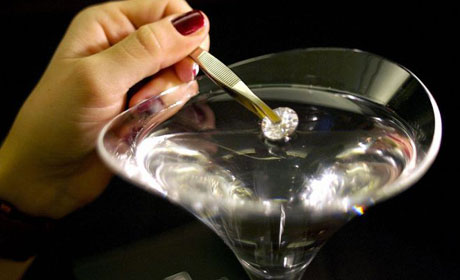
2. Diamond Cocktail – $ 4,350
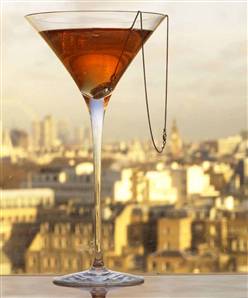
3. Platinum Passion – $ 1,500
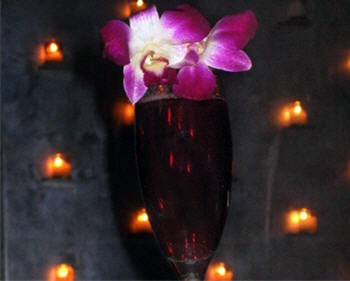
4. Mai Tai – $ 1,400
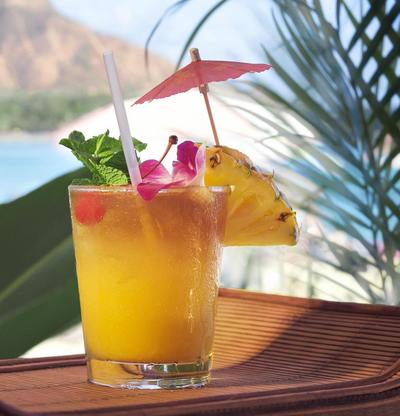
5. High Roller Martini – $ 1,000
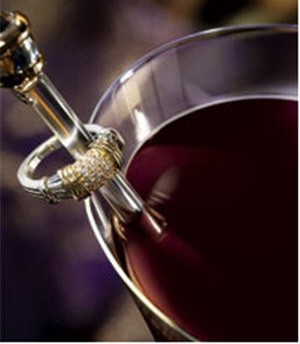
6. Magie Noir – $ 550
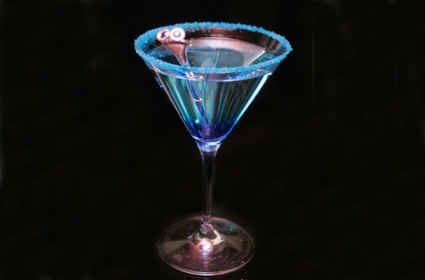
7. Ritz Sidecar – $ 515
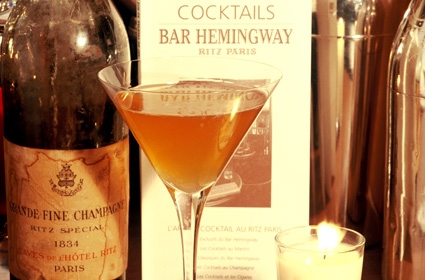
8. Truffle Martini – $ 100
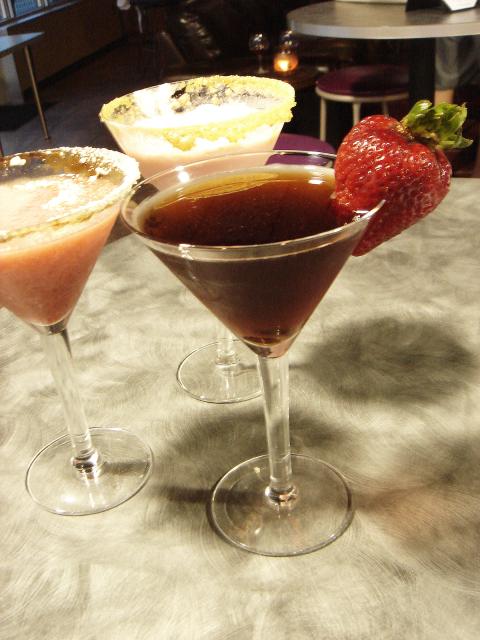
How To Make Cocktail
People sometimes forget that the mixer is as important as the spirits that go into the cocktail. Fresh juices, refreshing tonics, silky creams, and exotic flavors will make a cocktail infinitely more pleasurable. A Bloody Mary would never have caught on without the Worcestershire and Tabasco sauce complementing the Vodka and tomato juice so well.
If you're going to stock basic bar mixers in your home then you should check this list:
- cranberry juice
- lemon juice
- lime juice
- orange juice
- pineapple juice
- tomato juice
- coconut cream
- cola
- lemon/lime soft drink
- mineral water
- tonic water
- club soda
- cream/milk
- coffee
- Tabasco sauce
- Worcestershire sauce
- angostura bitters.
Include some confectioner's sugar, salt, pepper and, of course, ice.
Some people take the search for new and exciting flavors even further. Can you imagine a cocktail with beef broth as a key ingredient? How about horseradish sauce or lychee nuts? Don't be afraid to experiment. Remember, that's how the margarita was created.
A garnish adds extra color, flavor and style to your cocktail. The most common garnishes in popular cocktails include fruits such as cherries, lemons, limes, oranges, and pineapples. They bring their flavors and bright colors into the mix. In addition, olives, celery or onions are the finishing touch for some of the dry concoctions.
A twist of lemon or lime is a small strip of peel that gives great taste and style to many popular cocktails, a good example being the Manhattan. The best way to release the aromatic oils is to hold the twist with the thumb and index finger of your left hand while holding the pores or colored side down over the drink with your right hand. Twist and squeeze the oils from the skin. The twist is often placed on the rim of the glass, dipping into the drink.
When garnishing with a slice of fruit, be careful with the size; too thin a slice will make the fruit flimsy, while too thick can unbalance the look and even the flavor of the cocktail. The lime or lemon slice can be rubbed on the rim of a glass so that salt or sugar will stick to it.
9. RUM
Rum was first produced in the Caribbean in the 17th century from the large amounts of sugarcane that easily grew there. By way of naval exploration and trade, rum's popularity soon spread to Great Britain and North America, making rum a prosperous export by the late 17th century.
World's Most Expensive Rums
1. Wray & Nephew 17 Year Old - $ 55,000

2. British Royal Navy Imperial Rum - $ 30,000

3. Havana Club Maximo Extra - $ 1,700

4. Rhum Clement 1952 - $ 1,200

5. Bacardi Rum 8 Year Old Millennium Edition - $ 1,000

How To Make Rum
Rum is a sugarcane-based liquor that can be made from cane juice, concentrated cane juice or molasses (the byproduct of boiled cane juice.) Most rum is made from a mix of molasses, water and yeast that is left to ferment for 24 hours to make a light rum, or up to several weeks to make darker rums.
After being distilled, the rum is aged in barrels made of various materials, such as oak, which impacts the rum's flavor. While rum is typically clear before undergoing the aging process, barrel aging and adding caramel gives it a brown color. White rums do not have caramel added for color and are intended to be clear. If aged in an oak barrel, white rum is strained to remove any color assumed during the aging process.
Rum's distinct flavor can enhance a variety of food and cocktails. Some examples of foods and drinks that use rum as a significant ingredient are:
- bananas foster
- eggnogs
- mulled cider
- rum balls
- rum cake
- rum punch.